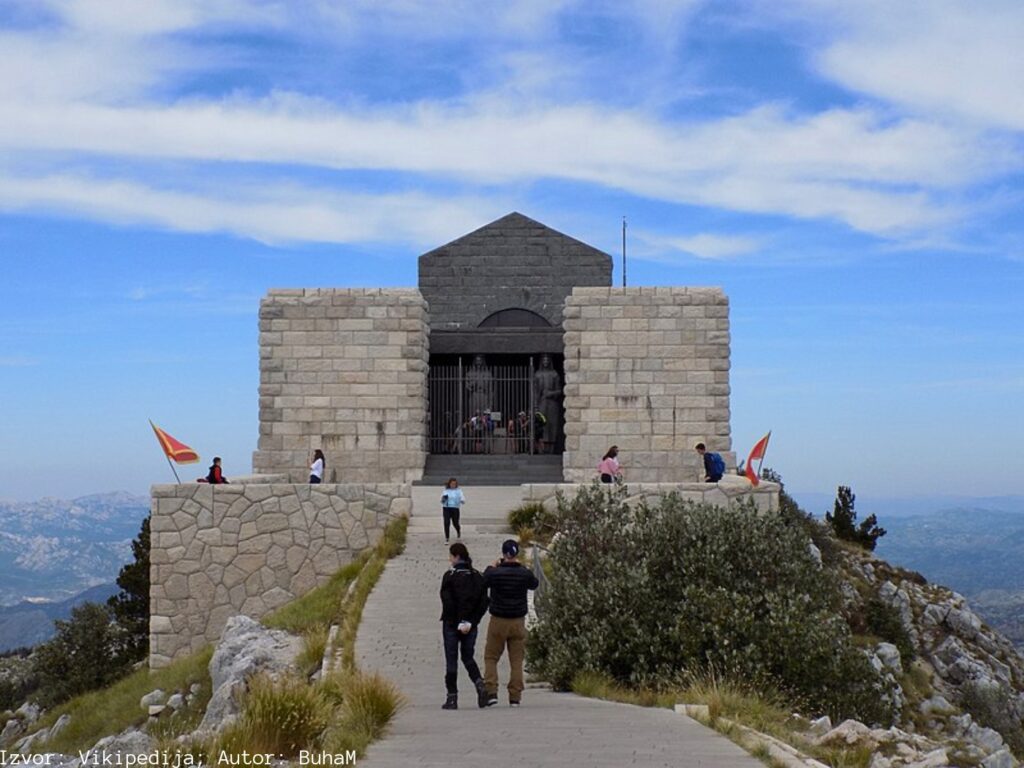Njegoš Mausoleum: An Unforgettable Monument to Montenegro’s Most Famous Poet
Njegoš Mausoleum is a memorial to Montenegro’s most famous poet, Petar II Petrović-Njegoš. Located atop the majestic Lovćen mountain, the mausoleum has become a pilgrimage site for Montenegrins and visitors from all over the world. The mausoleum, built in 1974, stands as a symbol of Montenegrin culture and national pride, and is an unmissable attraction for anyone visiting the Balkan country.
What to Expect from a Visit to Njegoš Mausoleum
The Njegoš Mausoleum is located at the summit of Mount Lovćen, the second-highest peak in Montenegro. The climb up the mountain is an experience in itself, with sweeping views of the beautiful Montenegrin countryside and the Bay of Kotor stretching out below. At the top of the mountain, the mausoleum stands tall, surrounded by a tranquil graveyard of Montenegrin heroes and patriots.
Once inside the mausoleum, visitors can expect to be awestruck by the grandeur of the building. The building is made of granite blocks, and the interior is adorned with high relief sculptures and paintings depicting the life and works of Njegoš. The most impressive feature of the mausoleum is the crypt, where the poet’s remains and those of his family members are interred.
The monument also has a museum that houses the poet’s personal belongings, including his swords, manuscripts, and books.
History and Significance of Njegoš Mausoleum
Petar II Petrović-Njegoš is regarded as one of the most important figures in Montenegrin history and culture. He was a philosopher, poet, and ruler of Montenegro, and his works are considered to be some of the most influential in the Balkans. Njegoš is particularly renowned for his epic poem, “The Mountain Wreath,” which is a masterpiece of Montenegrin literature.
After his death in 1851, the Montenegrin people sought to honor their beloved poet with an appropriate memorial. It was not until the 20th century, however, that the Njegoš Mausoleum was constructed. The monument was designed by world-renowned architect Andrija Mutnjaković, and it was built between 1969 and 1974.
Since its completion, the mausoleum has become a symbol of national pride for Montenegrins, and it has become a popular tourist attraction. Visitors flock to the monument to pay their respects to the beloved poet and to take in the stunning views from the top of Lovćen mountain.
Exploring the Surrounding Area
The Njegoš Mausoleum is located in the beautiful Lovćen National Park, which is a popular destination for outdoor enthusiasts. The mountain is home to a variety of wildlife, including wild boars, foxes, and golden eagles. Hiking, biking, and horseback riding are popular activities in the park, and visitors can explore the many trails that traverse the area.
The nearby town of Cetinje is another popular destination for visitors to the mausoleum. Cetinje was the former capital of Montenegro and is home to a number of historical monuments and other attractions. Visitors to Cetinje can explore the town’s many churches, palaces, and museums, as well as enjoy the charming architecture and laid-back atmosphere.
Additionally, the road leading to Lovćen mountain, known as the Serpentine Road, is famous for its breathtaking views and hairpin turns. Travelers often find the journey to the top of Lovćen to be as rewarding as the destination itself.
Overall, a visit to the Njegoš Mausoleum offers not only a cultural and historical experience but also the opportunity to immerse oneself in the stunning natural beauty and outdoor activities that the Lovćen National Park and its surroundings have to offer.
Visiting Practicalities
- Location and Access: The Njegoš Mausoleum is located at the summit of Mount Lovćen in Lovćen National Park. The nearest town is Cetinje. Visitors can reach the mausoleum by car or bus, with a parking area available near the entrance.
- Operating Hours: The mausoleum is generally open to visitors every day from 9:00 am to 5:00 pm. It is advisable to check for any changes in operating hours or closures, especially during holidays or special events.
- Entrance Fee: There is usually an entrance fee to visit the mausoleum, and the ticket may include access to the museum. It’s recommended to check the current fees before planning your visit.
- Attire and Considerations: As a place of cultural and historical significance, visitors are expected to dress modestly and respectfully. The weather can vary, so it’s advisable to bring appropriate clothing, especially if you plan to explore the surrounding trails.
- Guided Tours: Guided tours may be available, providing visitors with more insights into the history and significance of the mausoleum. Check with local tour operators or the site management for tour availability.
- Photography: Visitors are often allowed to take photographs inside the mausoleum, but it’s courteous to check for any specific rules or restrictions.
- Weather: The weather on Lovćen mountain can change, so it’s advisable to check the weather forecast before planning your visit, especially if you plan to explore outdoor activities in the surrounding national park.
Conclusion
A visit to the Njegoš Mausoleum is a journey into the heart of Montenegro’s cultural and historical heritage. The majestic setting atop Lovćen mountain, the grandeur of the monument, and the significance of honoring Petar II Petrović-Njegoš make it an unforgettable experience for travelers. Whether you’re interested in literature, history, or simply seeking breathtaking views and outdoor adventures, the Njegoš Mausoleum and the surrounding Lovćen National Park have much to offer.

